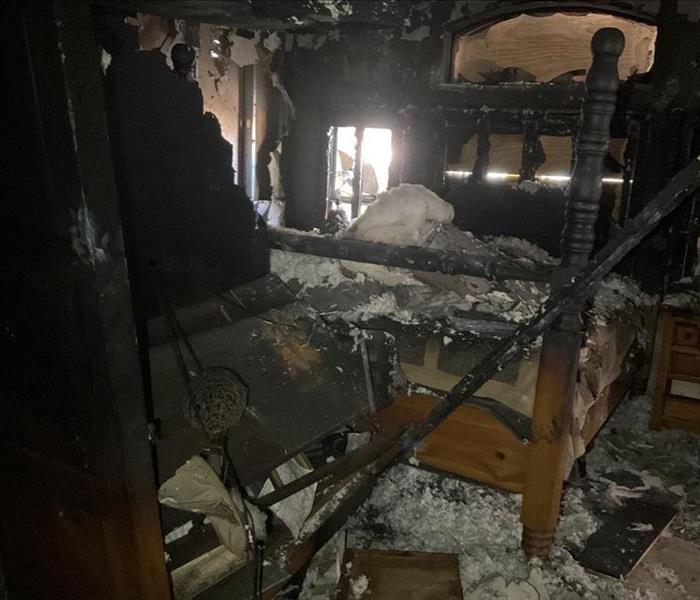What is a Fire Break?
8/14/2024 (Permalink)
 If you need help with fire damage restoration or have questions about fire safety, contact SERVPRO of Southwest Las Vegas.
If you need help with fire damage restoration or have questions about fire safety, contact SERVPRO of Southwest Las Vegas.
Wildfires can cause extensive damage, especially in dry and windy places like Las Vegas, NV. One effective way to prevent the spread of wildfires is by using fire breaks. But what exactly is a fire break, and how does it help control wildfires? This blog will explain what fire breaks are, why they are important, and how they are used.
What is a Fire Break?
A fire break, also known as a fire line or fireguard, is a gap in vegetation or other combustible material that acts as a barrier to slow or stop a wildfire. Fire breaks can be natural or man-made and are strategically placed to control the spread of fire.
Why Are Fire Breaks Important?
The main purpose of a fire break is to provide firefighters with a safer area from which to fight a fire. It also helps to limit the fire's ability to spread, protecting homes, properties, and natural resources.
Types of Fire Breaks
There are different types of fire breaks, each serving the same purpose but created in different ways.
Natural Fire Breaks
Natural fire breaks use existing landscape features that do not support the spread of fire. Examples include rivers, lakes, wetlands, and rocky terrain. These natural features can be very effective in stopping or slowing a fire.
Man-Made Fire Breaks
Man-made fire breaks are constructed by removing vegetation and other combustible materials to create a clear strip of land. These can include roads, trails, or specially cleared areas around properties.
How to Create a Fire Break
Creating a fire break involves careful planning and regular maintenance to ensure effectiveness.
Planning
First, identify high-risk areas and plan where the fire break will be most effective. Consider the terrain, prevailing winds, and the location of valuable assets such as homes and infrastructure.
Clearing Vegetation
Remove trees, brush, grass, and other combustible materials from the area where you plan to create the fire break. This clear strip of land will help stop the fire from spreading.
Maintaining the Fire Break
Regularly clear the fire break of any new vegetation growth to ensure it remains effective. This is an ongoing process that requires regular attention.
Controlled Burns
In some cases, controlled burns (also known as prescribed burns) are used to create fire breaks. This involves deliberately setting controlled fires to burn away vegetation in a designated area. According to the National Interagency Fire Center, controlled burns are a crucial tool in wildfire management and can significantly reduce the fuel available for wildfires.
Benefits of Fire Breaks
Fire breaks offer multiple benefits, making them a vital part of wildfire management.
Protecting Homes and Properties
For homeowners in Las Vegas, NV, creating fire breaks around their properties can be a critical measure in protecting their homes from wildfires. This is especially important in areas near wildlands where the risk of fire is higher.
Helping Firefighters
Fire breaks provide firefighters with safer and more effective positions to battle wildfires. By slowing the fire's progress, fire breaks give firefighters the opportunity to control and extinguish the fire more efficiently.
Saving Natural Resources
Fire breaks help protect forests, wildlife habitats, and other natural resources from being destroyed by wildfires. By containing the fire, these breaks help preserve the ecological balance and biodiversity of the area.
Final Thoughts
Fire breaks are a vital tool in managing wildfires. For residents of Las Vegas, NV, understanding and using fire breaks can be a crucial part of wildfire preparedness. Whether using natural features or creating man-made breaks, these barriers can protect homes, support firefighting efforts, and save natural resources. If you need help with fire damage restoration or have questions about fire safety, contact SERVPRO of Southwest Las Vegas. Our team is here to help you stay safe and prepared!






 24/7 Emergency Service
24/7 Emergency Service